Dr. Lieberman and Dr. Parikh are honored to be featured in NEWBEAUTY’s latest article, “9 Ways to Lift Sagging Cheeks” by Beauty Director Brittany Burhop Fallon. Pop over to their site to read the entire article! Below are the pearls from our own Drs. L&P.

From NEWBEAUTY.com: “9 Ways to Lift Sagging Cheeks”
“As we get older, the production of collagen and elastin, which are essential proteins responsible for maintaining the skin’s elasticity and firmness, decreases. This leads to sagging and drooping of the skin, including the cheeks,” explains Palo Alto, CA facial plastic surgeon Sachin S. Parikh, MD. “Additionally, like the proteins in the skin, the ligaments and muscles that provide support to our facial structures can weaken and stretch over time, leading to a loss of firmness and contributing to cheek sagging.”
Another change is that the fat pads in the cheeks can diminish or shift downward, resulting in a sunken or hollowed appearance, adds Palo Alto, CA facial plastic surgeon David M. Lieberman, MD. “This loss of volume contributes to the sagging of the cheeks and can make the nasolabial folds—the lines extending from the nose to the mouth—more prominent. Moreover, the constant downward pull of gravity can cause the soft tissues in the face to gradually descend. This effect, combined with the loss of facial fat in certain areas, can contribute to sagging of the cheeks.”
Lastly, lifestyle factors can play a big role in how we age. “External influences and lifestyle factors, such as excessive sun exposure, smoking, poor diet, and inadequate skin care, can accelerate the aging process and contribute to the breakdown of structural elements, further exacerbating the sagging of cheeks,” Dr. Parikh says.
What are the best ways to lift sagging cheeks without surgery?
Depending on the severity of the patient’s sagging skin and their desired outcome, nonsurgical treatments can be used for rejuvenation. These are some of the most commonly used methods:
Dermal Fillers
“Injectable fillers, such as hyaluronic acid-based fillers, can be used to restore volume to the cheeks and lift sagging skin,” says Dr. Lieberman. “The filler is injected strategically to add volume and create a more lifted appearance. Results are temporary and typically last several months to a year.” FDA-approved Restylane Contour won our 2023 NewBeauty Award for Best Cheek Filler, as it’s the only cheek filler with XpresHAn Technology, which allows the hyaluronic acid gel to move with your dynamic expressions and create natural-looking results for up to a year.
Radiofrequency (RF)-Assisted Microneedling or Ultrasound Therapy
“These energy-based treatments stimulate collagen production and tighten the skin,” Dr. Parikh explains. “RF microneedling treatments, such as Morpheus8, and ultrasound treatments, such as Ultherapy, can help lift sagging cheeks and improve overall facial firmness. They should be administered in an initial series, and then repeated every couple years to ‘touch up’ the results. Eventually, surgery may be required to achieve any further improvement.”
Thread Lifts
Though not as buzzed-about as they were a few years ago, thread lifts involve inserting dissolvable threads with tiny cones or hooks under the skin of the cheeks to lift the skin into a more youthful position. “The threads are gently lifted from in front of the ear to elevate the sagging cheeks temporarily,” Dr. Lieberman says. “However, we don’t offer thread lifts at our practice because the results we’ve seen haven’t been significant or long-lasting.”
Surgical Solutions for Lifting Sagging Cheeks:
When nonsurgical modalities aren’t producing the desired results or the surgeon doesn’t think it’s the best option for their patient, surgery may be recommended. These are the go-to procedures:
Fat Transfer or Facial Implants
In some cases, Dr. Parikh says fat transfer or facial implants can be used to restore lost volume in the cheeks. “Fat transfer involves removing fat from one part of the body and injecting it into the cheeks to lift and rejuvenate the area,” he explains. “Facial implants, on the other hand, are synthetic materials surgically placed in the cheeks to add volume and lift.”
Mid-Facelift
“A mid-facelift repositions sagging tissues and restores volume in the midface area.” Dr. Lieberman explains. “It addresses deeper signs of aging, such as nasolabial folds and hollowed cheeks, providing more significant and longer-lasting results compared to nonsurgical options.”
Traditional Facelift
A traditional facelift lifts sagging cheeks and also addresses other facial areas such as the jowls and neck, for a more complete, harmonious result, says Dr. Lieberman. “During a deep-plane facelift, underlying tissues are repositioned, excess skin is removed and the skin is redraped to create a more youthful appearance.”
Can skin-care products help lift sagging cheeks?
Unfortunately the results from skin-care products are temporary and can’t provide the same level of lift and firmness as surgical or nonsurgical procedures, but that doesn’t mean they’re not an important part of the equation. According to the experts, there are several ingredients one should incorporate into their routine if sagging cheeks are a main concern.
“These ingredients are fantastic for overall skin quality, and because they all work differently, it’s advisable to build a regimen that utilizes most or all of them,” says Dr. Parikh. “Consistent, long-term use of skin-care products is key for optimal results. While they won’t stimulate skin to build a significant amount of volume deeper in the cheeks, their ability to plump, smooth and reduce lines make them well worth the investment.” …
Peptides
According to Dr. Parikh, peptides are short chains of amino acids that can help support collagen production and improve skin elasticity, which can support firmness. …
Moisturizers
Dr. Lieberman says that keeping the skin adequately moisturized can help improve its texture and make it appear more supple. “Look for moisturizers with hydrating ingredients like ceramides, glycerin or natural oils to nourish the skin.”
Sunscreen
“As always, using sunscreen is the best thing you can do for your skin, to delay cheek sagging, and every other aging symptom,” says Dr. Parikh. “Protecting the skin from harmful UV rays is essential for maintaining skin health and preventing premature aging. Regular use of broad-spectrum sunscreen with a high SPF can help prevent photoaging and maintain the firmness and elasticity of the skin.”
























